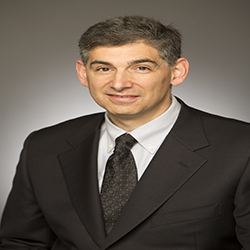Materials Science and Engineering Colloquium: Andrew Rappe

When:
Tuesday, May 10, 2016
4:00 PM - 5:00 PM CT
Where: Technological Institute, L361, 2145 Sheridan Road, Evanston, IL 60208 map it
Audience: Faculty/Staff - Student - Post Docs/Docs - Graduate Students
Contact:
Department Office
(847) 491-3537
Group: Department of Materials Science and Engineering (MatSci)
Category: Lectures & Meetings
Description:
The Bulk Photovolatic Effect in Polar Oxides for Robust and Efficient Solar Energy Harveting
ABSTRACT: Solar energy is the most promising source of renewable, clean energy to replace the current reliance on fossil fuels. Ferroelectric (FE) materials have recently attracted increased attention as a candidate class of materials for use in photovoltaic devices. Their strong inversion symmetry breaking due to spontaneous polarization allows for excited carrier separation by the bulk of the material and voltages higher than the band gap (Eg), which may allow efficiencies beyond the Shockley-Queisser limit. Ferroelectric oxides are also robust and can be fabricated using low cost methods such as sol-gel thin film deposition and sputtering. Recent work has shown how a decrease in ferroelectric layer thickness and judicious engineering of domain structures and FE-electrode interfaces can dramatically increase the current harvested from FE absorber materials. Further improvements have been blocked by the wide band gaps (Eg =2.7-4 eV) of FE oxides, which allow the use of only 8-20% of the solar spectrum and drastically reduce the upper limit of photovoltaic efficiency.
In this talk, I will discuss new insight into the bulk photovoltaic effect, and materials design to enhance the photovoltaic efficiency. We calculate from first principles the current arising from the "shift current" mechanism, and demonstrate that it quantitatively explains the observed current. Then, we analyze the electronic features that lead to strong photovoltaic effects. Finally, we present new oxides that are strongly polar yet have band gaps in the visible range, offering prospects for greatly enhanced bulk photovoltaic effects.
BIO: Andrew M. Rappe is a Professor of Chemistry and Professor of Materials Science and Engineering at the University of Pennsylvania. He received his A. B. in “Chemistry and Physics” summa cum laude from Harvard University in 1986, and his Ph. D. in “Physics and Chemistry” from MIT in 1992. He was an IBM Postdoctoral Fellow at UC Berkeley before starting at Penn in 1994. Andrew received an NSF CAREER award in 1997, an Alfred P. Sloan Research Fellowship in 1998, and a Camille Dreyfus Teacher-Scholar Award in 1999. He was named a Fellow of the American Physical Society in 2006. Andrew is one of the two founding co-directors of Pennergy: the Penn Center for Energy Innovation. He is also one of the founding co-directors of the VIPER honors program at Penn, the Vagelos Integrated Program in Energy Research. Andrew has published more than 200 peer-reviewed articles. Many of his current research interests revolve around ferroelectric phase transitions in oxides, surface chemistry and catalysis of complex oxides, and the interplay between the two: a) He helped establish relationships between composition and ferroelectric phase transition temperature in bismuth-containing perovskite oxides, b) He predicted that changing chemical vapor composition above a ferroelectric oxide could reorient its polarization, c) He revealed the mechanism of domain wall motion in ferroelectric oxides, d) He showed that changing ferroelectric polarization dramatically changes catalytic activity of supported metal films and nanoparticles, and e) He uses computational materials design to invent new ferroelectric photovoltaics for solar applications. In recent years, he has become actively involved in the theory of hybrid organic-inorganic perovskites and topological materials.